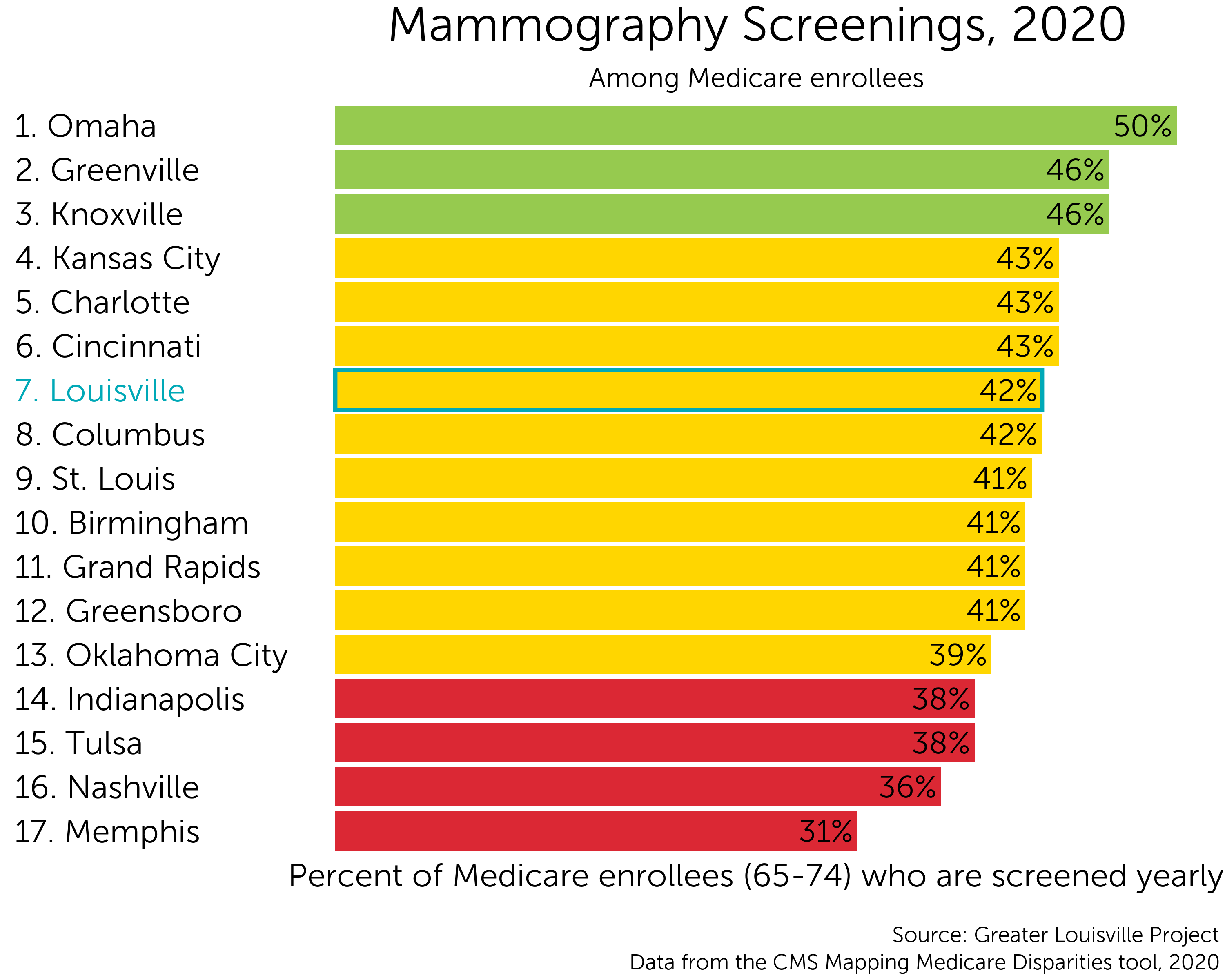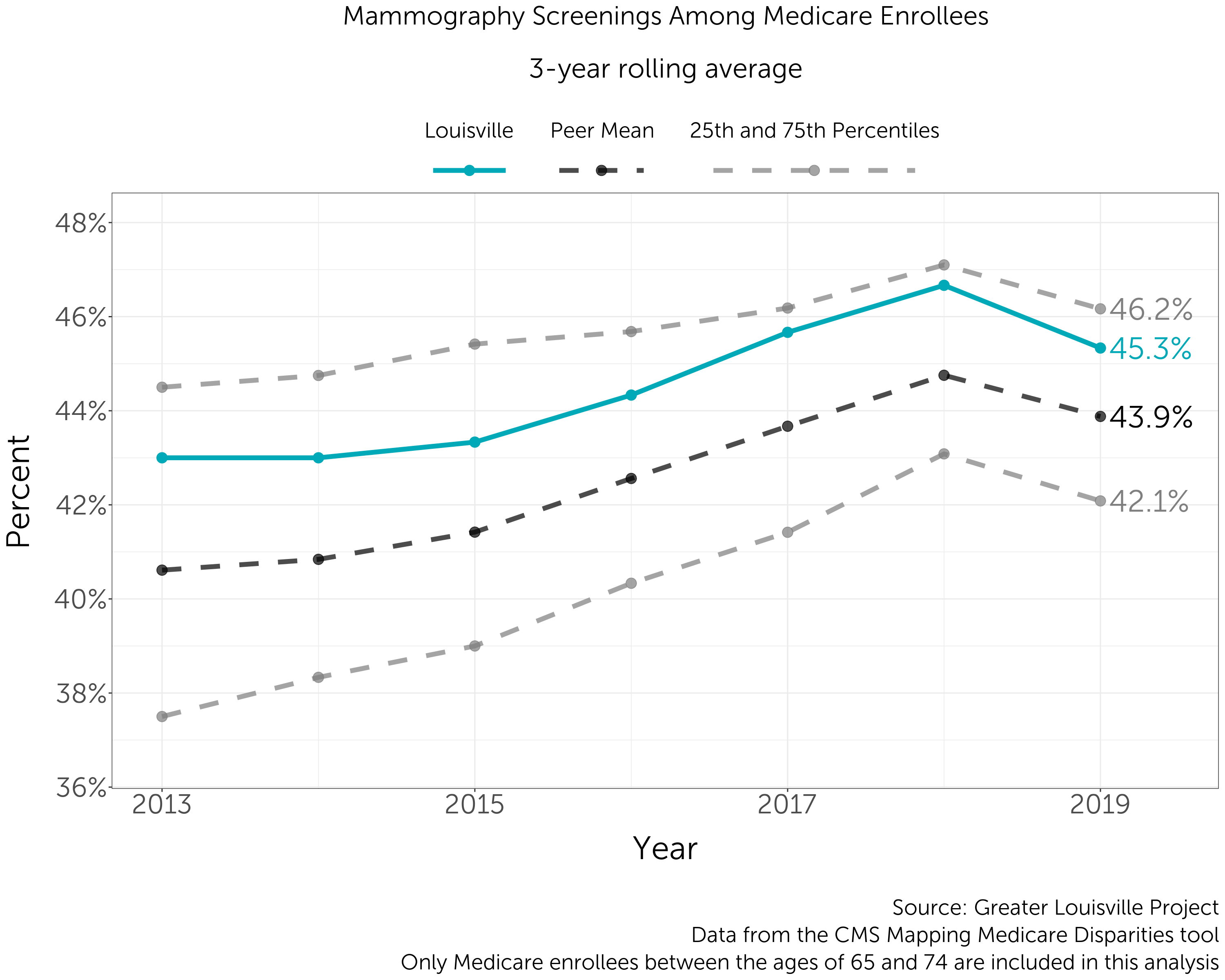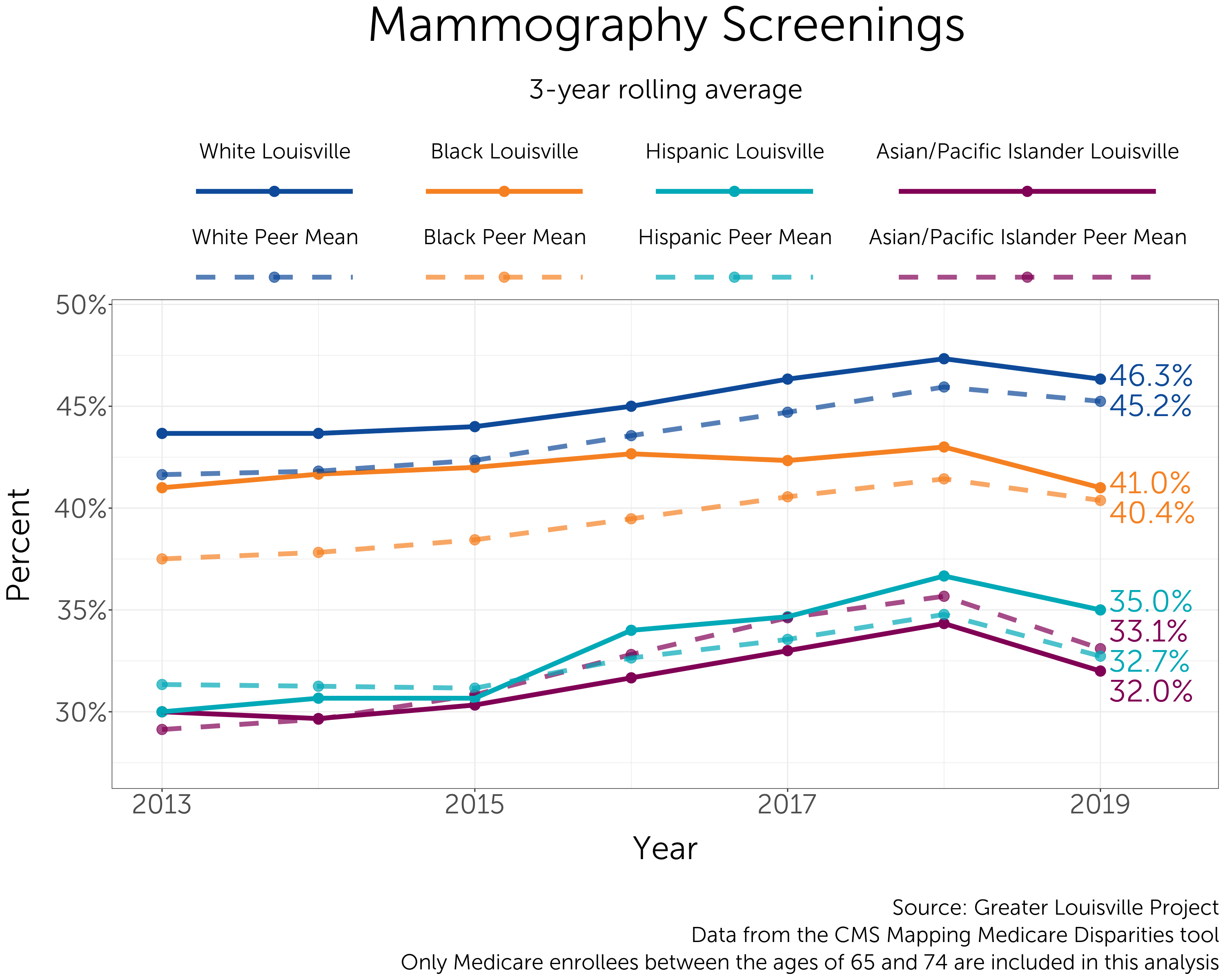Mammography Screenings
Mammograms play an important role in helping women to spot malignant lumps early, which has the potential to dramatically improve cancer survival rates.
Mammograms play an important role in helping women to spot malignant lumps early, which has the potential to dramatically improve cancer survival rates.
Louisville currently ranks 7th among its peer cities in the percentage of Medicare enrollees between the ages of 65 and 74 who receive yearly mammogram screenings.
Louisville is in the middle tier of its peer group according to a natural breaks algorithm. Cities in green are those that outperform their peers. Cities in yellow represent the middle cluster, and those in red lag behind their peers on this indicator.


Over the last decade, the percentage of Medicare enrollees between the ages of 65 and 74 who were going in for their yearly mammograms was rising. Recently, across all peer cities, that percentage decreased, likely in large part because the COVID-19 pandemic limited access to these screenings.
Over the past decade, Greensboro has seen its yearly mammography screenings among Medicare enrollees between the ages of 65 and 74 decrease by 2 percentage points, making it the worst performer of the group. Meanwhile, even with a recent dip in screenings, Columbus saw a nearly 9 percentage point increase in its mammography screenings, making it the best performer. Louisville continues to slightly underperform its peers, on average.


The mammography screening rate of White Medicare enrollees between the ages of 65 and 74 moved in tandem with the rate of Black Medicare enrollees for much of the beginning of the last decade. In recent years, however, the divide between these two groups has widened. The screening rates among Hispanic and Asian/Pacific Islander Medicare enrollees continues to sit well below those of White and Black Medicare enrollees.
For each indicator, Greater Louisville Project assigns cities into one of three groups (high-performing, middle-of-the-pack, and low-performing) based on how they compare to other cities. The assignment is based on how cities naturally cluster on that indicator. Sometimes, the differences between cities are very small, and the difference between a city ranked 5th and 6th could simply be a matter of the sampling error that arises from using survey data. Thus, rather than always make a division that declares the top 5 to be the top tier, we use a natural breaks algorithm to look for a cluster of cities that is outperforming the rest, a cluster that is about average, and a cluster that is lagging. This clustering gives us a better indication of where Louisville is thriving and where Louisville has room to learn from cities that are doing better.
Z-scores (or standardization) is a way to combine data with different units of measurement into a single index. The z-score is a measure of how far away a city (or census tract, etc.) is from the average city. In order to be comparable across different units of measurement, the z-score is the distance from the mean measured in standard deviations (e.g. if Louisville has a z-score of 1 it means Louisville is 1 standard deviation above the mean of its peer cities).
Data from the Robert Wood Johnson Foundation's County Health Rankings use z-scores and all z-scores are relative to the mean of Louisville's peer cities. (On the County Health Rankings site z-scores are relative to all the counties in each state - thus z-scores reported by GLP will be different, because we are using a different reference group). The Greater Louisville Project also uses z-scores in our multidimensional poverty index, which compares each census tract to the mean of all census tracts in Louisville.